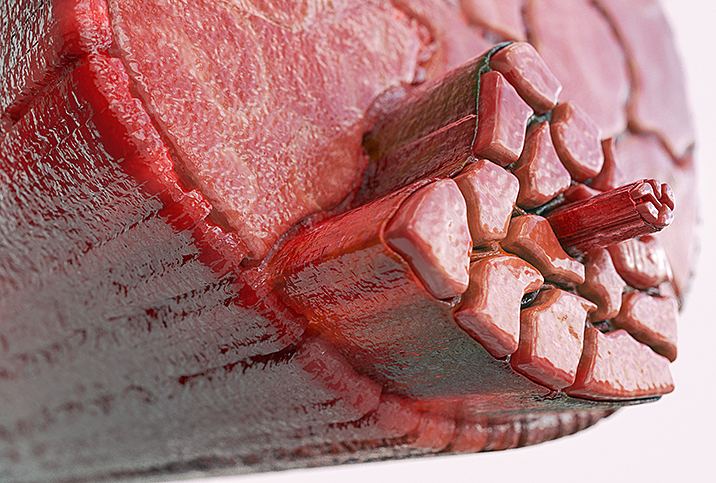Stents Are a Potential Cure for Vasculogenic ED

Artery blockage is a known contributor to erectile dysfunction (ED), so stents are sometimes used to keep the internal pudendal artery—which provides blood to the external genitalia—open. But what does this procedure involve? How effective is it? Let's learn about this newer treatment option for vasculogenic ED.
Generally, an erection is induced by an increase in blood flow to the penis. During sexual arousal, your brain sends messages that cause the corpora cavernosa—two cylinder-shaped chambers of tissue in the shaft of your penis—to relax, allowing blood to flow in and fill the open spaces. Each corpus cavernosum contains a main artery and a network of smaller veins.
The internal pudendal artery is the main source of blood supply to the penis. When those messages from your brain tell the penis to relax, blood enters faster than it can leave through the veins. This then compresses and traps blood in your penis, which allows you to stay erect.
An obstruction in your internal pudendal artery can prevent adequate blood flow to maintain an erection, leading to vasculogenic erectile dysfunction.
"So if you have any decreased blood flow as a result of your arteries being obstructed, theoretically, vascular stents could help open up that obstruction and, therefore, allow for more blood flow to go to the penis," said Justin Houman, M.D., a reproductive urologist and men's health specialist at Tower Urology in Los Angeles and the medical director for Bastion Health, an app-based telehealth platform for men.
Stent implantation for vasculogenic ED
The procedure for placing stents for ED is usually carried out with the patient under local anesthesia or light sedation. Once anesthesia or sedation has been administered, the surgeon accesses the artery in the groin.
"Wires and catheters are navigated into the arteries of the abdomen and pelvis. After, contrast dye is injected [angiography] to delineate the anatomy and reveal areas of blockage involving arterial blood flow to the penis [pudendal artery]," said Rameen S. Moridzadeh, M.D., a vascular and endovascular surgeon who is on the teaching faculty in the vascular surgery division at Cedars-Sinai Medical Center in Los Angeles.
Once identified, the blockage can be opened from inside the vessel wall using balloons (angioplasty) or by placing stents. These are much like the stents used to keep other arteries open. They are much smaller, however, due to the size of the arteries that supply the penis.
"The procedure itself only takes a couple of hours depending on the complexity, where the obstruction is and gaining access to it," Houman said.
Moridzadeh said it is often completed as a day procedure, so you don't need to stay in the hospital overnight. He called it an outpatient, ambulatory procedure that is most commonly performed via a micropuncture in the groin artery. Patients can be discharged after they recover for one to two hours in the hospital or clinic.
The typical time to fully recover is a week or two, Houman said, as long as there are no complications or side effects. As with any surgical procedure, side effects are a possibility.
The side effects and risks include:
- Bleeding
- Infection
- Contrast nephropathy, an injury to kidney function from the administration of contrast dye
"These are general risks from performing angiograms, but all of these risks remain low," Moridzadeh said. "Risks specific to pudendal artery stenting include blockage of the stent over time. Given that this is a newer procedure, no one knows the true risk of stent blockage."
How successful is stent implantation for ED?
The success rate of stent implantation for ED is very good based on early data. A German study showed stent placement eliminated the obstruction in arteries leading to the penis in 49 out of 50 men, Houman said.
Published in the Journal of Endovascular Therapy, the study concluded that endovascular revascularization is safe and effective in the majority of men whose ED is caused by an arterial obstruction in the pelvic and penile arteries.
Moridzadeh pointed out that angiograms with intervention are very common for arterial blockages throughout the body, such as in the heart and leg arteries. Treatment of pudendal artery blockages is newer—somewhat experimental, even—so the long-term outcomes aren't certain yet.
Houman added that the procedure isn't currently common because it's rare to have an obstruction of those large arteries leading to the penis.
"However, if they do, vascular stent placement is a great option for them," he said.
What do you need to know about stent implantation?
To be a candidate for stent implantation, men must have an obstruction of the larger arteries that supply blood flow to the penis, according to Houman. The problem is that ED isn't always caused by vascular issues. Sometimes it's due to hypertension (high blood pressure), diabetes or high cholesterol levels.
All of those conditions can impact the smaller arteries leading to the penis.
"Although technology has advanced in addressing these small arteries, it's very difficult to keep those small arteries open through these stents, given the size of those arteries, which are millimeter to submillimeter in size, typically," Houman said.
Men are not candidates if they suffer from ED as a result of nonvascular issues with the penis, such as abnormal hormone levels, nervous system dysfunction, psychogenic ED and more. For these reasons and many others, ED affects more than 30 million men in the United States, according to the National Institute of Diabetes and Digestive and Kidney Diseases.
"Any man with ED should talk to his urologist about candidacy for this procedure," Moridzadeh said, adding that if imaging studies confirm blockage of the pudendal artery, they should discuss whether consultation with a vascular specialist is warranted.
"Ultimately, this is a technology that can benefit a large number of men," Houman concluded. "However, the technology has to continue to improve before we're able to appropriately use this in the majority of men for vasculogenic ED."


















